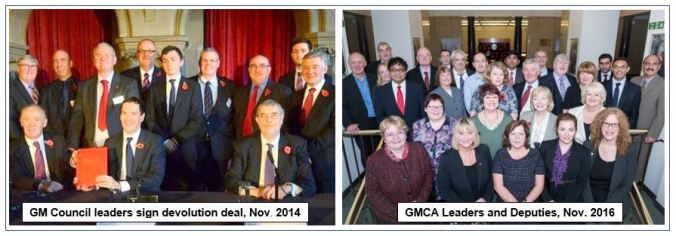Marc Vilalta Reixach
Over the last decades, we have been witness to a global phenomenon of increasing urbanisation of the territory. In many countries around Europe – among them, Spain – we can easily identify the trend towards the creation of large urban areas, which concentrate a large percentage of the population and plays an essential role in economic activity. Although, without a doubt, these new metropolitan spaces offer multiple opportunities for their inhabitants, they also pose important challenges, not only in the social, environmental or economic context but also in terms of their legal organization.
Indeed, the fact that the dimension of the great conurbations exceeds the administrative limits of a single municipality forces the different public authorities to seek legal instruments that allow them to face the common challenges posed by the administration of these spaces. For example, in Spain, although our legal system provide for the possibility to create real metropolitan governments, our public authorities have mainly opted to respond to this phenomenon through the use vertical collaboration or by creating specific metropolitan agencies. In fact, in Spain, only Barcelona has created a comprehensive level of metropolitan governance to organise this space (with the Metropolitan Area of Barcelona).
This failure is often explained in the Spanish literature by the configuration of the metropolitan areas as a formula not always desired by the municipalities (as it is imposed by law) or by those charged with creating them (the regions, Comunidades Autónomas), who have generally viewed them as a strong local counter-power.
This is why we decided to put on our attention to other comparative legal experiences. Although we are not trying to import techniques from other legal systems, we believe that the study of comparative law could help us to better understand and manage our own reality.
And, from this perspective, the English legal system provides a very interesting point of comparison, because, after numerous regulatory changes, a novel organizational solution has recently been established for large urban areas in England: combined authorities.
After analysing the legal regime of the English combined authorities, what insights can be gleaned from the study of combined authorities? In my opinion, the English combined authority model allows us to draw at least two main ideas that could be useful for the Spanish authorities in addressing the metropolitanization of our territory.
- Diversity and flexibility. One of the main characteristics of the English model is that combined authorities are configured – at least theoretically – in a variable, flexible way, both in terms of territorial boundaries and functions. This allows large urban areas to adapt their institutional organization to the specific requirements for each territory. In this sense, unlike Spanish metropolitan areas, the creation of the combined authorities has been seen as a bottom-up process, in which all the levels of government have played an active role (even when the political-partisan dynamics was not coincidental), promoting an attempt to decentralize England territorially.
- Democratic governance. The evolution of the combined authorities in England has allowed them to assume a notable variety of powers (in transport, housing,…), thus meaning that they play a more active role in the implementation of public policies at the metropolitan scale. Thus, this evolution has imposed on them a model of democratic governance, through the direct election of the metropolitan mayor. The metro mayor can contribute not only to strengthened leadership and external projection of combined authorities, but also to their democratic representativeness and to the creation of a metropolitan identity shared by the citizens of these territories. In my view, this is also an interesting idea, because even the metropolitan area of Barcelona (which is the metropolitan government with a greater degree of institutionalization) is indirectly elected and without a metro mayor.

Marc Vilalta Reixach is lecturer of Administrative Law at the University of Barcelona (Spain). His research focus on local government law, inter-administrative relations and public procurement law. During the last term he has been visiting researcher at the Institute of Local Government Studies (INLOGOV) of the University of Birmingham.


 Chris Game is a Visiting Lecturer at INLOGOV interested in the politics of local government; local elections, electoral reform and other electoral behaviour; party politics; political leadership and management; member-officer relations; central-local relations; use of consumer and opinion research in local government; the modernisation agenda and the implementation of executive local government.
Chris Game is a Visiting Lecturer at INLOGOV interested in the politics of local government; local elections, electoral reform and other electoral behaviour; party politics; political leadership and management; member-officer relations; central-local relations; use of consumer and opinion research in local government; the modernisation agenda and the implementation of executive local government. Chris Game is a Visiting Lecturer at INLOGOV interested in the politics of local government; local elections, electoral reform and other electoral behaviour; party politics; political leadership and management; member-officer relations; central-local relations; use of consumer and opinion research in local government; the modernisation agenda and the implementation of executive local government.
Chris Game is a Visiting Lecturer at INLOGOV interested in the politics of local government; local elections, electoral reform and other electoral behaviour; party politics; political leadership and management; member-officer relations; central-local relations; use of consumer and opinion research in local government; the modernisation agenda and the implementation of executive local government.





 Chris Game is a Visiting Lecturer at INLOGOV interested in the politics of local government; local elections, electoral reform and other electoral behaviour; party politics; political leadership and management; member-officer relations; central-local relations; use of consumer and opinion research in local government; the modernisation agenda and the implementation of executive local government.
Chris Game is a Visiting Lecturer at INLOGOV interested in the politics of local government; local elections, electoral reform and other electoral behaviour; party politics; political leadership and management; member-officer relations; central-local relations; use of consumer and opinion research in local government; the modernisation agenda and the implementation of executive local government.